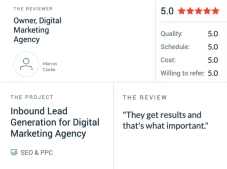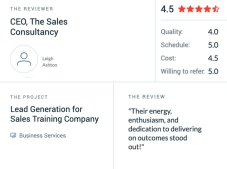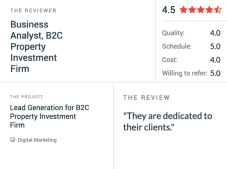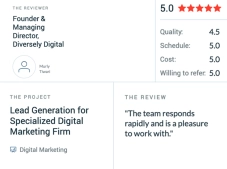How to Use Google Analytics

Email marketing is one of the most effective ways to reach your audience and promote your products or services. However, it can be difficult to determine whether your email campaigns are actually driving the results you want.
That’s where Google Analytics comes in. By using this powerful tool, you can track the performance of your email marketing campaigns and gain valuable insights into your audience’s behaviour and preferences.
In this blog post, we will explore the power of analytics and how to use Google Analytics to monitor your email marketing campaigns. We will cover the basics of email marketing, the benefits of using Google Analytics, and the key metrics you should be tracking to measure the success of your email campaigns.
Whether you’re a beginner or an experienced email marketer, this post will provide the knowledge and tools you need to take your email marketing efforts to the next level.
So let’s get started!
The Importance Of Tracking Email Campaigns
Email campaigns are a crucial aspect of any business’s marketing strategy. However, it is not just the content of the emails that need to be carefully crafted but also how they are tracked and analysed. Analysed email campaigns provide valuable insights into customer behaviour, preferences and engagement levels, which can help businesses make data-driven decisions to optimise their future campaigns.
One of the key benefits of tracking email campaigns is that it helps businesses understand what works and what doesn’t in their email marketing open rates, click-through rates and conversion rates.
Businesses can identify patterns or trends that will inform future campaign strategies. For example, if an email with a particular subject line receives a higher open rate than others, this could indicate that customers prefer personalised content over generic messaging.
Tracking email campaigns also allows businesses to segment their audience based on customer behaviour.
How To Start Tracking Emails With Google Analytics?

To start tracking your emails with Google Analytics, you will need to follow these steps:
Set Up Google Analytics Tracking On Your Website
If you do not already have a Google Analytics account, create one now.
You must establish a property. You want to track a property represented by a website, an app, or an email. After completing this, you must create a tracking code and reporting view before you can begin gathering data.
Create A Trackable Campaign Url
The following step is to create a unique URL. Click on Google’s Campaign URL Builder to get started.
Some Urchin Tracking Module (UTM) parameters must be filled out for a URL to be trackable. When UTM tags are added to the links in your newsletter, Google Analytics can track the traffic that originates from those links and goes to your website.
Now, complete the necessary information (UTM tags), and the program will create a URL for you automatically:
The full URL of the landing page where your email audience is targeted can be found in the “Website URL” column.
The type of emails to be sent should be entered after checking the “Campaign Source” field—for instance, a sponsored email, a newsletter, etc.
In the “Campaign Medium” section, type “email” since we are tracking emails here. The sort of marketing activity, such as daily emails, weekly emails, promotional emails, etc., is defined using this.
Provide a “Campaign Name” of your choosing after that.
You can also enter information in the “Campaign Content” area. When different links going to the same Site are added and recorded, this is mostly used for A/B testing. A URL will be created to measure variables like email openings and clicks.
Create Advanced Segment
To examine the actions of certain visitors or market segments, Click “Audience” in the sidebar to get started. After that, choose “Add Segment” from the “Audience Overview” menu.
Then, to create a new segment, click the “New Segment” button.
Enter the campaign medium that you used to set up the tracking under “Traffic Sources” – > “Medium.”
Then, choose the filters for each segment you want to focus on trackings, such as age, geography, and demographics. This is not required.
To construct your new segment, click the “Save” button at the end.
Now, you may choose the new segment in any report you have from Google Analytics.
Include The Trackable Url Link In The Email Copy.
Once your trackable URL has been created, add it to the body of your email.
It is typically not advised to add the entire URL because it might not appear well visually in an email and might confuse your readers. Place the link on an anchor text instead.
Monitor And Analyse Your Email Performance
With Google Analytics set up to track your email campaigns, you can now monitor and analyse your email performance. This involves tracking key metrics such as open rates, click-through rates, and conversion rates to identify areas where you can improve your email campaigns.
Google Analytics Reports Explained

Here are some of the most important reports in Google Analytics you can use to monitor results:
Audience Overview
This report provides an overview of your website’s traffic, including the number of visitors, their location, and the devices they use to access your site. It can help you identify trends in your website traffic and optimise your site for different devices.
Acquisition Overview
This report explains how visitors find your website, including which channels drive the most traffic. This report can help you determine which marketing channels are most effective for your business.
Behaviour Flow
This report shows visitors’ paths through your website, including which pages they visit and how they navigate between pages. It can help you identify areas of your website that need improvement and optimise your site’s user experience.
Conversion Overview
This report explains how many visitors complete specific actions on your website, such as purchasing or filling out a form and it can help you identify areas to improve your website’s conversion rate.
Real-Time Overview
This report provides real-time information about your website’s traffic, including how many visitors are on your site and which pages they view. It can help you monitor the performance of your website and respond quickly to any issues or opportunities.
By using these reports in Google Analytics, businesses can gain valuable insights into their website traffic and online marketing efforts and make data-driven decisions to improve their performance.
Conclusion
Google Analytics is a powerful tool that can help you monitor and optimise your email marketing campaigns. By tracking key metrics such as open rates, click-through rates, and conversion rates, you can gain valuable insights into your audience’s behaviour and preferences and make data-driven decisions to improve your campaigns.
Remember, the key to successful email marketing is constantly monitoring and analysing your campaigns and making adjustments based on your learning. With Google Analytics, you have all the data you need to optimise your campaigns and achieve your marketing goals.
So, whether you’re just getting started with email marketing or looking to take your campaigns to the next level, be sure to leverage the power of analytics and use Google Analytics to monitor and improve your email marketing efforts.
Was this article helpful? Let us know in the comments.
FAQS
What kind of data can I track with Google Analytics for email marketing?
You can track various email marketing metrics with Google Analytics, including open rates, click-through rates, conversion rates, bounce rates, and more.
How do I analyse email performance data in Google Analytics?
You can analyse email performance data in Google Analytics by viewing reports such as the Campaigns, Acquisition, and Behavior Flow reports. These reports provide insights into how users interact with your emails and website.
What are some best practices for using Google Analytics to monitor email marketing?
Some best practices for using Google Analytics to monitor email marketing include setting up tracking correctly, regularly analysing performance data, using data to optimise email campaigns, and integrating with your email service provider.


















